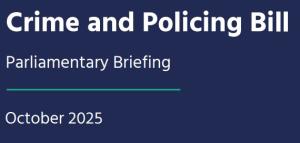Since becoming the Children’s Commissioner, I have travelled across the country meeting children whose lives are shaped by decisions made far away from them and those whose voices are rarely heard.
Time and time again, I have witnessed children being held on custodial remand, not because they pose the greatest risk, but because the system around them has failed. This report shines a light on one of the most troubling aspects of our youth justice system, the use of custodial remand on children.
Every child has the right to grow up safe, loved, and with the opportunity to thrive. Yet, for too many children, that promise is broken long beforehand.
Last year, 441 children who were locked up in custody awaiting their hearing did not end up receiving a custodial sentence. Another 168 children had their case dismissed altogether.
These are not harmless delays. Even a short spell in custody can be profoundly damaging to a child. From disrupting education, cutting them off from their family and community and sometimes entrenching the vulnerabilities that brought them into contact with the justice system in the first place. That experience leaves a mark, one that lasts long after their release.
What children tell me most about their time on remand is the uncertainty. Not knowing what the outcome will be or how long they will be held in custody. They describe feeling powerless, having to cope with waiting for decisions that are constantly delayed and beyond their control.
“They give us a piece of paper which they send down for my court dates…. But I just have to keep an open mind that for whatever reason, some court dates might be changed” – Child, age 15, with experience of custodial remand.
Most of these children are already among the most vulnerable in our society. Many have experienced disrupted education, unmet special educational needs and poverty, as I highlighted in my report this year, The Educational Journeys of Children in Secure Settings. Many have also been criminalised by a care system that should be looking after them, as described in my upcoming report, The Criminalisation of Children in Care.
Among these vulnerable children are those from black and mixed backgrounds, who are over-represented in custodial remand, underscoring how bias can impact every step of their experience in the youth justice system.
We should be clear, however, that custody is the most extreme intervention the state can make in a child’s life and it may be necessary in a very small number of serious cases. But it is not, and must never become, a waiting room for children whose real need is care, housing or mental health support. Or as one secure setting staff member aptly described, “a production line of pointlessness.”
When a child is placed on custodial remand, it must be because there is no other safe and viable alternative.
The question is no longer whether change is needed but whether we are willing to act with the urgency these children deserve.




